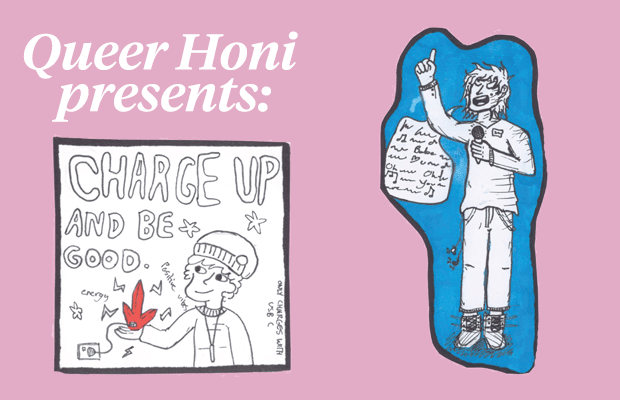How does the relationship between gender and the body change as the individual loses bodily autonomy? Conceptions of gender are projected onto bodies according to socially constructed categories based on the sex binary. As feminist theories of gender have questioned and analysed this binary concept, bodies which do not align with this notion have attracted both recognition and contention.
There exist many types of bodies that do not conform to the social structures which uphold socio-cultural discourses; bodies can also transition between different constructs of gender into a twilight zone outside of the traditional gender binary. This means that investigating the relationship between gender and different bodies requires an intersectional approach. For instance, the deteriorating or dying body rejects traditional notions of femininity and masculinity and takes on its own conception of humanity. As feminist scholarship deconstructs traditional assumptions about expression and the body, the idea arises that ‘gender’ is merely a name we have given to something not entirely definable: as Jung and Franz say, it is ‘a name based upon a system of beliefs but not on factual evidence’.
From birth, children are socialised based on their sex and taught to use their bodies in accordance with deeply ingrained social infrastructures. On a corporeal level, we can perhaps consider what some call feminine motility and masculine motility; however, how does the body become gendered once it loses its movement and function? If gender is created through the body, can a body retain gender as it passes between the stages of deterioration, dying and death, when it takes on different forms of movement (or lack of movement) and becomes immersed in a very unique mode of socialisation? In fact, the body becomes lost in a sea of ‘ambiguity’; its very existence signifies both life and death as indivisible, but the idea of death as being inherently chaotic implies a loss of control over the body, where it cannot continue to coherently perform gender without copying specific behaviours that suggest adherence to one gender or another.
In social contexts the human body has been used as a conduit for various expressions of gender; it has acted as a symbol which doesn’t have an inherent meaning but which has acquired meaning through communication and replication of social constructs. The body has been described as the ‘ultimate vessel for expressing identity’, demonstrating how it is gendered through interpretation, rather than by any inherent physical or biological characteristic. As gender is inextricably tied to the social, cultural and political milieu in which acts of performativity occur, the concept of gender itself begins to break down in contexts where regulatory ideals that categorise different types of gendered behavior are not strongly present.
It has been proposed that since deliberate repetition of particular practices creates a space for certain conceptions of gender, then theoretically there should also exist a space where, by a different combination of actions, there could exist a different gender. Scholars argue that gender is always constructed through the body, but what is interesting is that there are situations where the body starts to become separated from the cognitive processes of the individual, and hence from gender as we know it, creating a new conception of how the body is conceived socially. The tension between this concept of gender identity is further magnified once the deteriorating body starts to ‘betray’ the individual by preventing the performance of gender as the body and the individual start to disconnect.
Our understanding of both disability and gender is derived from biological realities in a cultural system that requires one’s command over their body. The deteriorating body becomes the ‘Other’, an alien entity that experiences unique modes of reception and oppression as compared with the abled female body. This relates to the perfectionistic purification of female bodily functions, where the body that loses control is seen as ‘transgressing against itself’ and becoming a sinful thing, unable to be placed within the comfortable and accepted binary. The way gender is constructed to demand sanitisation of the female body and the idea that its deterioration challenges our concept of socially acceptable behavior is highly relevant to discussions of how women are not encouraged to develop bodily capacity, but instead are taught to actively hamper themselves in the pursuit of femininity. However, in death and dying the body can no longer repeat the actions that constitute femininity.
The ‘grotesqueness’ of the dying body creates a separation from traditional notions of gender, and hence feminist scholarship is necessary in reimagining this relationship once the boundaries of life and death start to become blurred. In the process of abjection, the individual expels part of their being by labelling it as the ‘Other’ and creating a boundary between where the body ends and the Other begins. This process helps to create gender through performance, as different subjects abject different things, leading to the creation of the acts which both bring the gendered body into existence and govern it. In deterioration and dying this boundary becomes frayed and ambiguous, as the body itself becomes the Other, with its actions and motions shifting beyond the control of the individual.
While in life the body is governed by imposed constraints along a gendered line, death is the limit of power, a final barrier which when crossed destroys these constraints and creates new conceptions of the body. When anlaysed through the lens of intersectional feminism, the way that gender is ascribed to a body becomes a complex dynamic between socially accepted ideals and the politics of the individual’s location. A key aim of feminist scholarship, literature and activism, has been the liberation of the body from imposed socio-cultural constructions and constraints. Hence, reimagining gender and the body is crucial to empowerment and breaking down the social infrastructures that enable oppression and withhold privilege on the basis of the sex and gender binaries.





